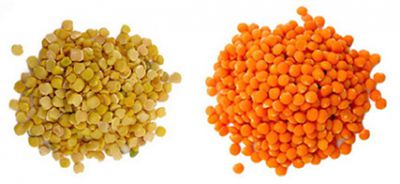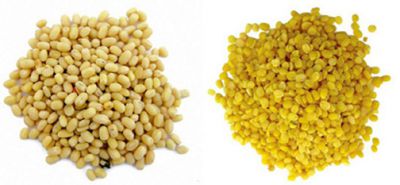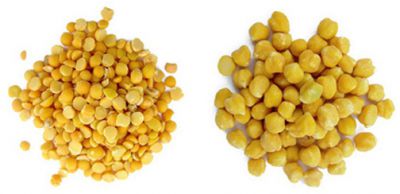Pulse
Pulse (dal) dried edible seeds of some cultivated annual legumes, such as peas, beans, lentils, etc. The pulses contain high amount of protein (20-25%); due to some unusually high lysine content comparable to animal proteins and having less commercial price, the pulses are sometimes called as poor man's meat. Along with proteins, pulses also supply a good proportion of carbohydrate, fats and minerals.
Some common pulses



The common pulses in Bangladesh are Masur (lentil), Mung (green gram), Mashkalai (black gram), Chhola (chick pea), Kheshari (lathyrus or grass pea), and Motor (pea). Kheshari is widely cultivated, mostly as fodder, and also consumed by the villagers of the northern part of the country. Masur is popular to all classes of people, and is taken in almost all meals. Mashkalai and Chhola are taken occasionally. Pulses are cultivated as rabi crop mainly in the western and northern parts.
Table Production of principal pulses (2002-2007 m tons).
| Pulses | 2002-03 | 2003-04 | 2004-05 | 2005-06 | 2006-07 |
| Kheshari | 157000 | 134000 | 136000 | 107000 | 83000 |
| Masur | 116000 | 122000 | 121000 | 115000 | 117000 |
| Gram | 11000 | 10000 | 10000 | 10000 | 10000 |
| Mashkalai | 16000 | 18000 | 17000 | 17000 | 18000 |
| Mung | 30000 | 30000 | 18000 | 17000 | 19000 |
| Motor | 12000 | 13000 | 9000 | 8000 | 7000 |
| Arhar | 2000 | 2000 | 1000 | 1000 | 1000 |
| Other pulses | 4000 | 4000 | 4000 | 4000 | 3000 |
| Total | 349000 | 333000 | 316000 | 279000 | 258000 |
Source Yearbook of Agricultural Statistics, 2005.
Nowadays the land for pulse cultivation has been squeezed considerably competing with rice cultivation. Couple of decades back the land for cultivation of pulses were about 0.3 million hectares. The present production of pulses is less than half the requirement for the country. [Mostafa Kamal Pasha]
